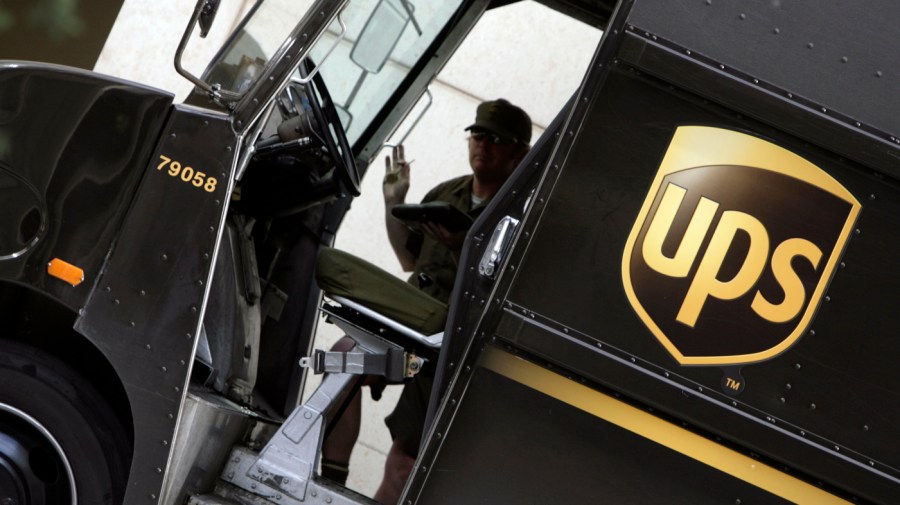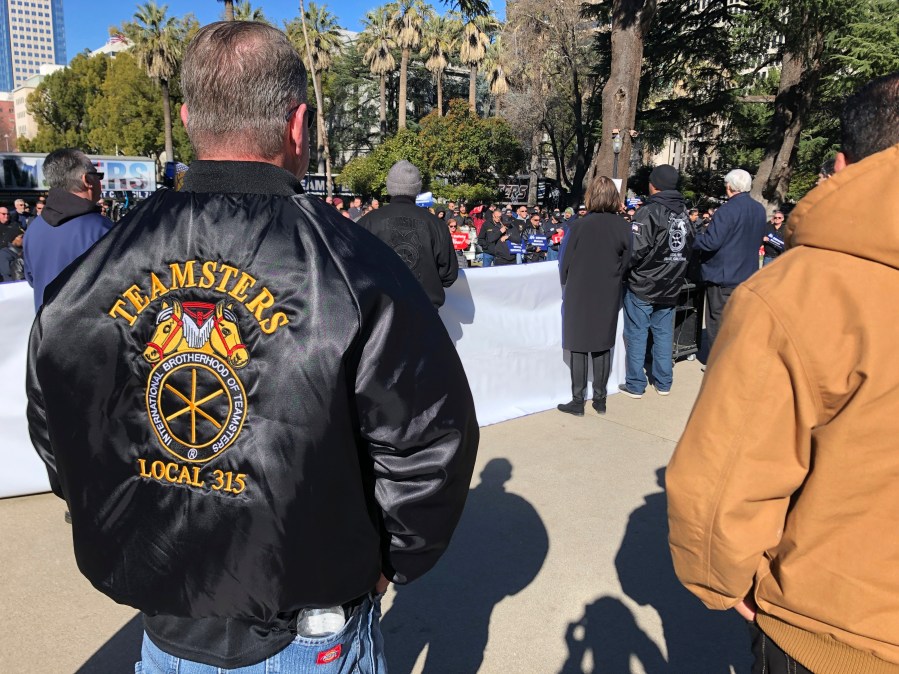A major UPS strike is looming — here’s what that means for your packages
Tens of thousands of unionized workers for the United Parcel Service are on the verge of going on strike as negotiations between the company and the International Brotherhood of Teamsters for better benefits and working conditions reach a critical point.
Workers dialed up the pressure on the shipping giant this week, demanding the company present its “best and final offer” by Friday, or it would begin the largest single employer strike in decades.
A Teamsters representative did not respond to a request for clarification on what a strike may consist of for workers and consumers or when it might commence.
UPS has said it transports about 6 percent of the nation’s gross domestic product (GDP) on a daily basis and more than 3 percent of the global GDP.
More to the story: Teamsters strike with UPS could snarl commerce as labor flexes muscle
The UPS Teamsters contract expires July 31, and if a deal isn’t made soon, a chunk of its workforce could have picket signs in hand later this summer.
Just more than a month remains until a key deadline for both sides to have a deal or risk a major strike for a company that averaged delivering more than 24 million packages daily last year.
Who are the Teamsters?
UPS touts itself as the country’s “single-largest employer” of the Teamsters union, which comprises more than 300,000 warehouse, transportation and delivery workers, among others.
Earlier this month, the union voted overwhelmingly to authorize a strike if the shipping company failed to deliver a “strong contract” by the end of next month, which is when the union’s current contract is set to lapse.

At the time, the union said it was working to negotiate a new five-year contract with UPS that included “higher wages for all workers, more full-time jobs, an end to forced overtime and harassment from management, elimination of a two-tier wage system, and protection from heat and other workplace hazards.”
A representative for the company said Thursday that both sides have so far reached consensus on a host of “non-economic” issues.
That includes heat-mitigation efforts like agreeing to air conditioning in certain newly purchased trucks in hotter areas beginning next year.
What are the sticking points?
While UPS says they’ve been able to find common ground in some areas like subcontracting and technology, the representative said both sides have yet to reach a compromise on wages, health care and pension.
“Reaching consensus requires time and serious, detailed discussion, but it also requires give-and-take from both sides. We’re working around the clock to reach an agreement that strengthens our industry-leading pay and benefits ahead of the current contract’s expiration on August 1. We remain at the table ready to negotiate,” the company said this week.
In a statement Wednesday, the Teamsters union described UPS’s counter proposal to the union’s financial package as “appalling,” accusing the company of “offering miniscule raises and wage cuts to traditional cost-of-living adjustments.”
UPS had a market capitalization of $151 billion at close of trade Thursday.
The union has warned UPS that a strike is “imminent” while setting a Friday deadline for the company to “return a last, best, and final offer.”
Workers eye bottom line: Inflation eases as corporate profits fall from record levels
If UPS fails to do so, the union said the company “risks putting itself on strike by August 1 and causing devastating disruptions to the supply chain in the U.S. and other parts of the world.”
Kara Deniz, a spokesperson for the union, said Thursday that “the deadline really stems from the fact that we’ve been in negotiations with UPS since January.”
“We need time to get it properly disseminated, reviewed and voted on by July 31, so that we can have more money in our members pockets and all the things that they want,” Deniz said, “to have continuity for July 31, going into August 1.”
Deniz also said that, should the union strike, there is a “robust strike fund” to help workers stay afloat.

What does this mean for packages?
Jonathan Gold, vice president of supply chain and customs policy at the National Retail Federation, said a UPS Teamsters strike could produce a significant disruption.
He pointed to supply issues experienced during the pandemic as an example.
“You’d have supply chain disruption like we witnessed during the pandemic potentially, where you won’t be getting your deliveries,” Gold said. “So, those who are relying on next day, two-day delivery of whatever you buy online or somewhere else, potentially cannot be delivered.”
Gold said it could also be difficult for other shipping companies to carry the extra burden in the event of a disruption, noting the “capacity for other carriers to pick up where UPS isn’t able to do that is not that easy.”
“It’s not as if you can just quickly turn to another company. The question is what capacity is available to make that shift,” he said. “And it’s unclear if there’s capacity elsewhere to make up for that.”
A larger trend is at play as labor affects supply chain
The battle between UPS and the Teamsters is the latest example of workers taking a stand against major transportation and shipping companies.
Longshoremen and port workers held up ships in West Coast ports earlier this month amid negotiations between the International Longshore and Warehouse Union and the Pacific Maritime Association, which represents 70 shipping companies and terminal operators.
Other worries arise: Ships pile up in West Coast ports in labor fight, threatening supply chain chaos
The White House also took action to stave off a potential strike by U.S. rail workers last year, which could have paralyzed domestic shipping and driven another round of supply chain dysfunction.
“Since the pandemic, supply chain issues have clearly become more salient to decision makers, and disruptions have also become more widely reported on,” Barthélémy Bonadio, assistant economics professor at New York University Abu Dhabi, said over email Thursday.
“Maybe this extra attention can be a factor encouraging organized labor to adopt a harder line as they can get politicians’ and media’s attention more easily,” he said.
What do striking workers want?
Representatives for transportation workers say their requests are simply a matter of fairness.
Companies responsible for running global supply chains reaped remarkable profits from the glut of goods purchases driven by the pandemic and the high inflation that followed.
UPS set company records for profits in each of the past two years as millions of Americans and generous federal pandemic aid powered an online shopping boom.
Soaring demand for goods also sent shipping costs skyrocketing, pushing up prices for consumers and profits for shipping firms. Rising fuel costs, however, did put a dent in UPS’s earnings toward the end of 2022.
Bonadio added that inflation is likely playing a role on both sides of the negotiating table.
While annual inflation has fallen sharply from a peak of 9.1 percent in June, price growth is still roughly twice the Federal Reserve’s target of 2 percent.
Inflation fell to a 4 percent annual rate in May, according to the Labor Department, but experts say it is likely to remain above the Fed’s target until the job market weakens.
“The compensation remains the big issue and inflation is a big factor in determining how much of a raise in [dollars] is a real raise,” Bonadio said.
“Inflation also means that UPS’ input costs have risen (fuel, car maintenance etc),” he continued. “UPS can afford a smaller wage increase than if its other costs had remained constant.”
Copyright 2023 Nexstar Media Inc. All rights reserved. This material may not be published, broadcast, rewritten, or redistributed.

